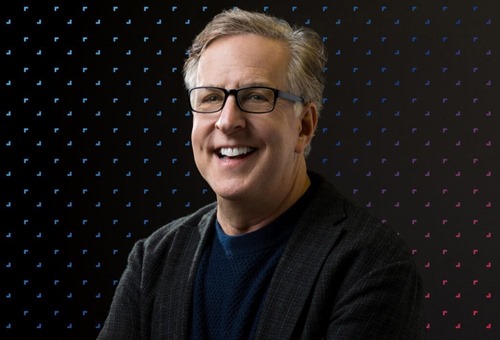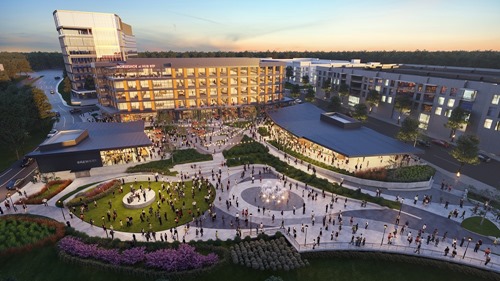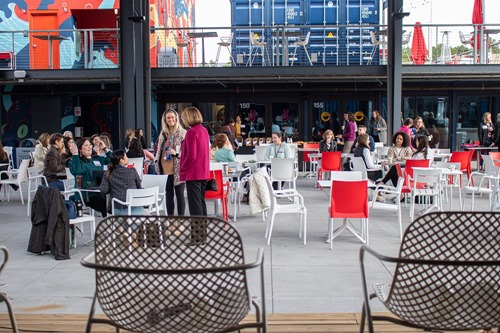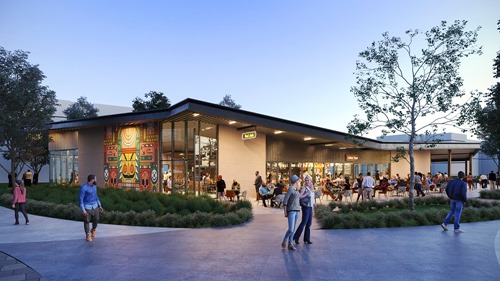Peers around the world: leading regional development at RTP
/Scott_Levitan.jpg)
In the first of a new series of interviews with leaders of innovation spaces from around the world, IASP is delighted to talk to Scott Levitan, CEO and President of the Research Triangle Park (RTP) in North Carolina, USA. Our conversation covers the renowned park’s origins, the thriving community it has built, and big plans for ongoing development in the future!
The RTP brand is known around the world: what is it that makes you unique?
We were one of the first, we’re one of the biggest and have had extraordinary success over 63 years in meeting our mission - to support collaboration among our 3 sponsoring tier-one research universities, providing a platform in the center of our region for industry partnerships and improving economic well-being for the residents of North Carolina.
You are national leaders in agricultural biotech and life sciences – how did those emerge as leading sectors?
We have always played to the strength of our region. North Carolina’s economy has been based on agriculture and manufacturing for over a century. RTP and our University partners have supported those sectors, so there is a natural affinity. With $5.4B combined 2022 sponsored research among our universities, national and private labs, our industry clusters have expanded to include FinTech, IT, Gaming, Quantum Computing, AI, Life Sciences and Drug development. The Triangle’s top ranking in multiple industry clusters is a synergetic and unique proposition for emerging and established companies.
We’ve seen pictures of a fantastic new development at the RTP called the Boxyard, with diverse mix of entrepreneurs, artists and creatives based in old shipping containers. Where did the idea come from, and how did you go about building this community?
In 2016, we began turning the 500,000 sq ft of vacant buildings we owned into our Frontier RTP campus. Because the cost basis was low, we were able to renovate inexpensively (‘cheap & cheery’) and offer inexpensive space to lab and office startups who had not previously had opportunities to be in RTP. We even dedicated 1 floor of a building for free co-working space. In just under 24 months, the Frontier campus was fully leased and now supports 200 of the 400 companies in RTP. This is NOT an incubator - we do not provide add-on business services and consulting for start-ups. What we do is provide below market space in the center of the Triangle Region and invest in programming to foster community among entrepreneurs.
Boxyard RTP is a continuation of that strategy. An aggregation of 50 shipping containers offers 15 creative, local food, beverage, services and entertainment venues for emerging local retailers. Since opening in 2021, Boxyard RTP has become a destination not only for RTP employees but for the Triangle Region. We provide entertainment programming at least 4 days per week and is a venue for private events. A Boxyard project is NOT for the faint of heart and should not be undertaken as a for-profit investment. In our case, Boxyard has been transforming for our enterprise and community.
You’re currently developing HUB RTP. What role does it play in attracting talent to the region?
The talent market is extremely competitive and today’s workforce seeks a diverse, mixed-use community experience. RTP’s development typology was established in the 1960s when secured corporate R&D campuses were the norm. HUB RTP responds to attract companies, residents and talent that seeks a highly amenitized work and live community. Anchored by a 13 acre park, HUB is RTP’s new downtown. HUB is in the center of RTP and the region, 9 minutes from RDU International Airport. This $2B investment commenced in 2021 and the retail, office, lab and residential components will open in early 2024.
Many IASP members visited the RTP in 2009 when the park hosted the IASP World Conference. What are the key changes you would highlight since then for them to understand where the RTP is today?
Embracing the concept of Innovation Communities, RTP is adapting its development, transportation, open space and collaboration models to be forward facing in support of the needs of our company partners. Looking further into the future, the Triangle Region will experience a 50% population increase (1M new residents) by 2045. Located in the center of the region with 7,000 acres (half the size of Manhattan Island and one quarter the size of Paris), RTP will revision itself play a pivotal role in the growth of the Triangle Region.
Unique in North America, the Triangle has the opportunity to mitigate suburban sprawl and accommodate growth inward. Through an environmental sustainability lens, densification toward the core, within a district already serviced by transportation, utility and public service infrastructure offers an exceptional smart growth opportunity that we are excited to pursue.
To learn more about RTP and the work they are doing, visit https://www.rtp.org/.
/)




.JPG)

/canvascolor(0xffffffff)/sosyokent-logo-eng_2.png)
/canvascolor(0xffffffff)/2025_03_04_Germany_Ostfalen.png)
/canvascolor(0xffffffff)/Logo_ruta_n_4.PNG)
/canvascolor(0xffffffff)/2017_07_31_PITA.jpg)
/canvascolor(0xffffffff)/Tech_Parks_Arizona_1.png)
/canvascolor(0xffffffff)/MemberLogo-5769-6232.jpg)
/canvascolor(0xffffffff)/ipm_logo_1@2x.jpg)
/canvascolor(0xffffffff)/Logo_PEGUlm_neu.jpg)
/canvascolor(0xffffffff)/rs_ystp-logo-en-high-02.png)
/canvascolor(0xffffffff)/Teknopark_vekt_rel_logo_page-0001_1.jpg)
/canvascolor(0xffffffff)/Incuba.png)
/canvascolor(0xffffffff)/FOTO-PERFIL-2.png)
/canvascolor(0xffffffff)/New_Logo_sapiens_(1)_page-0001.jpg)
/canvascolor(0xffffffff)/2020_06_29_Sweden_Link_ping_SP.jpg)
/canvascolor(0xffffffff)/Yothi_Medical_Innovation_Disctrict.jpg)
/canvascolor(0xffffffff)/Surrey_Research_Park_BLUE_(RGB).gif)
/canvascolor(0xffffffff)/UBT1_1.png)
/canvascolor(0xffffffff)/V_CLR_1_1.png)
/canvascolor(0xffffffff)/WhatsApp_Image_2024-03-11_at_10.37.06.jpg)
/canvascolor(0xffffffff)/logotecnopole_alta_resolucion_1.jpg)
/canvascolor(0xffffffff)/KACSTLogo_1_3.png)
/canvascolor(0xffffffff)/2024_01_09_Logo_Business_Turku_2.png)
/canvascolor(0xffffffff)/2019_08_30_UK_Here_East.jpg)
/canvascolor(0xffffffff)/stepc_logo.png)
/canvascolor(0xffffffff)/Logo_Bioindustry_nuovo_1.jpg)
